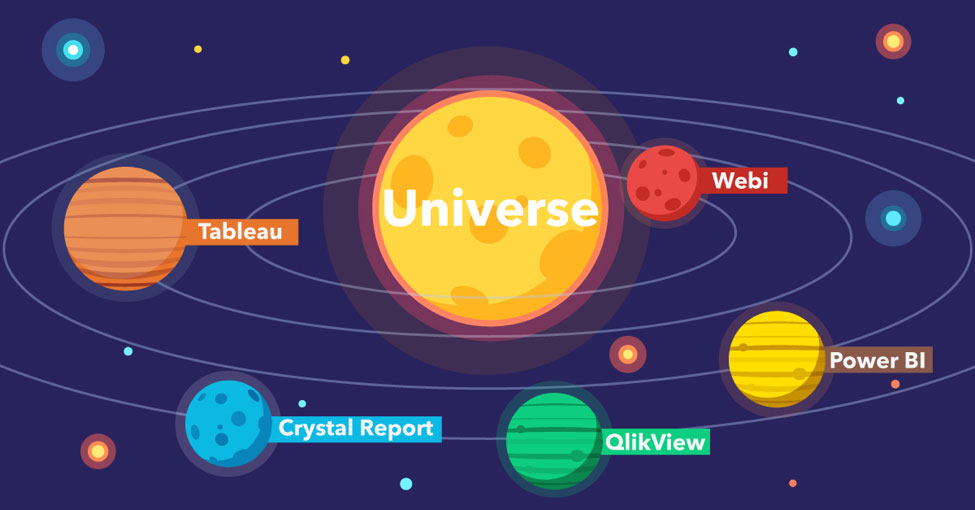SAP BI and Analytics Strategy: Don’t Throw the Baby Out With the Bathwater

Twenty years ago, I began working with Business Objects. Ten years later, I started a little company in my basement, developing software that enhances Business Objects. That little company is now called 360Suite by GB&Smith, and has 70 employees, more than 500 global customers, and 3 million end users throughout North America, Europe, and Asia. It’s fair to say we’ve learned a thing or two about SAP customers and their relationship to Business Objects along the way. The Business Objects co-founder even joined our board of directors. A recent article outlines the SAP business intelligence and analytics strategy. Here’s my reaction.
THE EVOLUTION OF BUSINESS INTELLIGENCE
In the early days, business intelligence operated in the margins. Then, data and analytics became king, and Business Objects was propelled to the front lines. Today, a majority of organizations rely on business intelligence, and run multiple traditional and/or modern BI platforms that address different business needs. What made Business Objects so successful from the beginning was its disruptive and innovative semantic layer, which hid the complexities of the database structure and SQL language, and introduced a self-service way for end users to query data. (Watch the Business Objects co-founder explain the origins of the company and the concept behind Universes.) In addition, Business Objects included a popular desktop reporting tool called Deski. When web-based tools came into vogue, Business Objects intentionally killed Deski and replaced it with Webi . At the same time, products that now compete with Business Objects, like Tableau, Power BI, and QlikView, entered the scene to fulfill a need for desktop data visualization tools. What if SAP had continued to invest in Deski alongside Webi, and added data visualization capabilities? They may have avoided an enormous, unnecessary investment in Lumira and kept a larger piece of the Analytics market!
SAP AT A CROSSROADS
SAP finds itself in a similar situation today. Recognizing that the future is digitization, the company is pursuing a strategy of delivering an entire business analytics platform in the cloud. Although SAP has pledged Priority 1 support for BOBJ SP4.2 through the year 2024, future investment will focus on SAP Analytics Cloud. Fortunately, there’s still time for SAP to change direction and avoid throwing out the baby with the bathwater once again.
For many organizations, no other product can easily replace Business Objects because the Universe model is secure, convenient, scalable, and the foundation on which their business intelligence reporting structure is built. Rebuilding from the foundation up is a massive undertaking. As a result, organizations that want to take advantage of modern BI platforms often choose to run them alongside Business Objects in order to retain access to Universes.
In hybrid BI mode, SAP Analytics Cloud offers access to on-premise BOBJ Universes, but it lacks performance, security, and governance, and doesn’t have much market share. There’s no reason to think SAP Analytics Cloud will overtake Business Objects anytime soon, especially among organizations that don’t already rely on multiple SAP applications. For many organizations, BOBJ is an invaluable asset. When it comes to Business Objects, the old adage, “if it ain’t broke, don’t fix it” applies. The continued loyalty of customers depends on the SAP’s continued commitment to Business Objects.
To stay on top, SAP should leverage its assets by continuing to invest in BOBJ and opening up Universes to other BI analytics tools.
LOOKING TO THE FUTURE AND BUILDING ON THE PAST
SAP must act quickly to retain their customer base because the tub is draining fast. We have extensive knowledge of the Business Intelligence ecosystem, and can say with certainty that the landscape is changing. Even legacy partners who were 100% committed to Business Objects in the past, are now partnering with other technologies. Eventually, competitors will figure out how to get around SAP. The trendy new BI platform, Looker, already features a semantic layer of sorts. To stay on top, SAP should leverage its assets by continuing to invest in BOBJ and opening up Universes to other BI analytics tools. In this scenario, rather than being replaced by other BI tools, Business Objects will remain the foundation and create new opportunities for growth. Customers are reluctant to start over from scratch with competing products. At the same time, they want to take advantage of the various new tools on the market. Being able to combine the best of both worlds—BOBJ Universes and Webi, together with the data visualization tool of choice—increases the odds that organizations will live by the words of a timeless children’s song: Make new friends, but keep the old. One is silver and the other gold.







Very nice article and undoubtedly agree about the bad strategy of killing Deski … I feel we may never needed to do Lumira 🙂
Excellent article Sebastian and thanks for sharing your insight. I agree that SAP should leverage its existing semantic layer with other new analytical tools that are out in the market.
I agree with this article. One platform, one semantic layer, one reporting tool (multi functional, multi format)